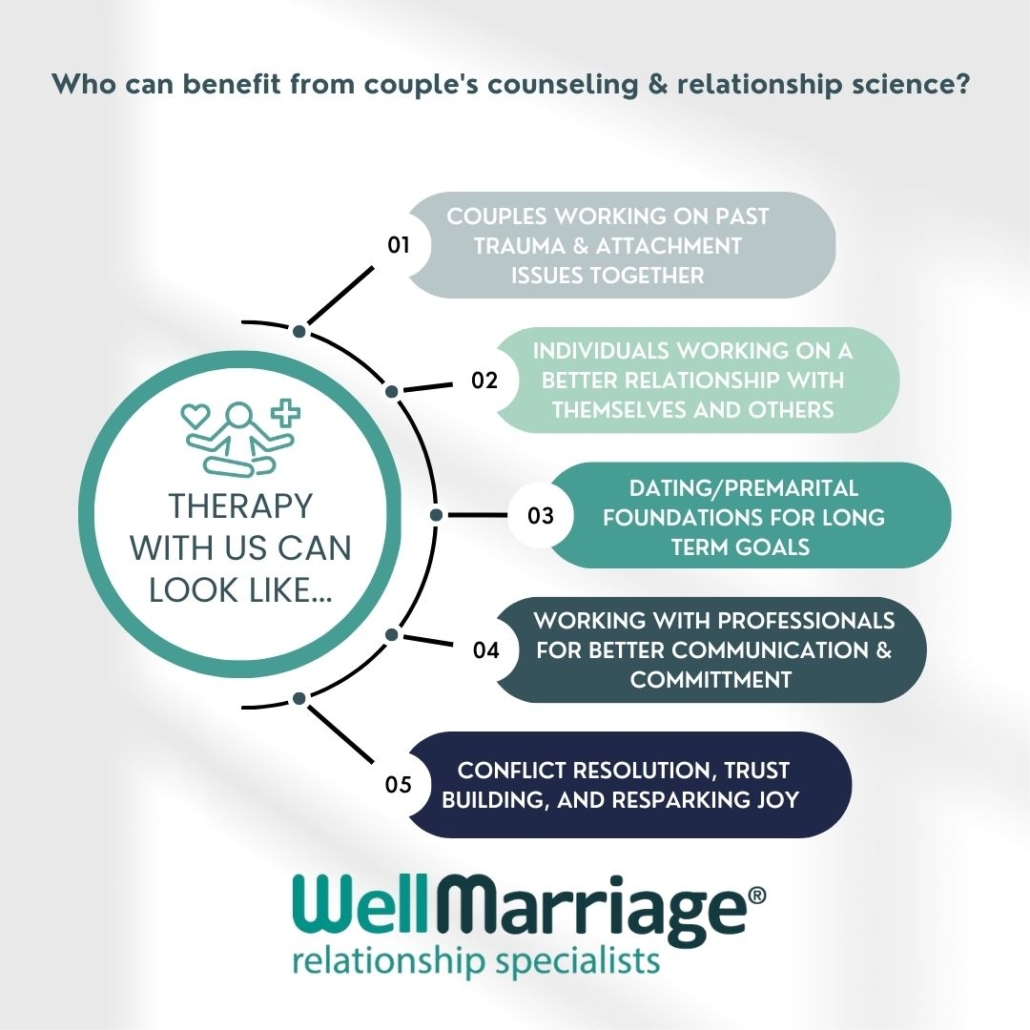Aim Point Counseling Fundamentals Explained
Aim Point Counseling Fundamentals Explained
Blog Article
Things about Aim Point Counseling
Table of ContentsGetting My Aim Point Counseling To WorkSome Known Factual Statements About Aim Point Counseling The Best Guide To Aim Point CounselingThe 9-Second Trick For Aim Point CounselingThe 8-Minute Rule for Aim Point CounselingAim Point Counseling Things To Know Before You Get This
The longitudinal layout involves a pre-treatment study and 2 follow-up surveys at 3- and 12-months post-intervention. The study is embeded in 8 Relationships Australia Victoria centres, across municipal, external suburbs, and regional/rural websites. Relationships Australia, a non-government organisation, is the biggest supplier of couple therapy and partnership services in Australia.
These high rates of connection failure have actually been constantly linked with adverse wellness consequences for both grownups and youngsters adhering to divorce/separation.
Aim Point Counseling Can Be Fun For Everyone
Longitudinal research studies likewise suggest that youngsters of separation have a higher occurrence of psychological problems, alcohol and drug use, and high-risk sex-related behaviour [7] The effects of separation and separation can be harmful, research indicates that high partnership dissonance in intact pairs is likewise most likely to have unfavorable end results.
Research to date has identified both couple and private elements that might add to partnership discord. These include relationship fulfillment and commitment at the couple level, and depression at the individual level.
Little Known Questions About Aim Point Counseling.
Relationship complete satisfaction has actually been the most usual outcome variable identified in more than 200 evaluations of pair counselling [11,12] Researches have discovered considerable enhancements in connection complete satisfaction from pre- to post-treatment [13,14] and over the course of one to 2 years adhering to counselling [15] In these studies, connection contentment was most often assessed using the Dyadic Adjustment Scale (DAS) [16] While the majority of studies show enhancements in connection satisfaction complying with couple counselling, they are limited by the samples and measures utilized, greatly short-term follow-up time frameworks, and analyses that do not account for the dyadic nature of pair information., is an additional commonly investigated connection end result.
To summarise, research indicates that couple-specific variables in addition to individual variables might anticipate the end results of couple counselling and connection solutions. The causal direction of these relationships, nevertheless, is much less clear. These observations are essential, because, to warrant and guide the application of relationship services such as pair counselling, empirical proof has to discover both the results of connection services and the factors that predict effective treatment.
, at the very least in some European nations.

We currently understand little about the profiles of pairs who seek out connection education compared to those who look for relationship therapy, or the outcomes of these programs. Unscientific proof suggests that there may be significant distress among at the very least some pairs looking for relationship education and learning. Partnership education programs differ from couple coaching as they are typically highly structured, performed in teams, and concentrate on a blend of 4 elements; recognition, feedback, cognitive change, and skills training [45]
A Biased View of Aim Point Counseling
Responses involves individuals completing sets of questions about their connection (e.g. measures of interpersonal problems), and obtaining information on what their ratings indicate. Cognitive-behavioural strategies promote transforming cognitions to assist in favorable partnerships.
These meta-analyses highlight constraints in the current literary works on partnership education. This sample profile might not stand for clients who commonly provide for partnership education.
The 15-Second Trick For Aim Point Counseling

Very little study has actually taken a look at the relative benefits of couple coaching and connection education and learning programs. As clients are most likely to self-select into these service kinds, it is not clear whether particular partnership distress accounts existing per service type, or indeed whether there is a communication between presenting account, service type and end result.
(https://a1mpoint.creator-spring.com/)
Thus, we have actually included a 12-month follow-up to evaluate longer-term fads and impacts.
As a result, we propose to utilise multi-level analytical modelling procedures that regulate for the inter-dependence of couple information to examine any type of treatment results. The particular goals of the ECC research are to: 1. Map accounts of clients seeking neighborhood agency-based pair therapy vs. relationship improvement programs in terms of socio-demographic and connection indicators (such as connection complete satisfaction, partnership commitment, social problems, and factors for attending), in addition to wellness (such as anxiety, their explanation basic health and wellbeing) and health service usage (eg.
2. Determine whether pair therapy and partnership education and learning services boost 3- and twelve-month results for partnership fulfillment, dedication, and depression, making use of statistical analyses proper to pair data. 3. Identify the loved one payments of client elements (specific and pair) and therapy/education elements to results at 3- and 12-months, and to sustainability of end results in time.
Aim Point Counseling for Beginners
Multi-level modelling to identify pre-post differences, regulating for dyadic (pair) level. To add to the literary works examining the effectiveness of community-based pair therapy. The outcomes will certainly help medical decision-making in community-based connection solution setups, and professional training. 3. To establish the family member contributions of client/couple and treatment aspects to outcomes at 3- and 12-months, and to sustainability of end results gradually.
Report this page